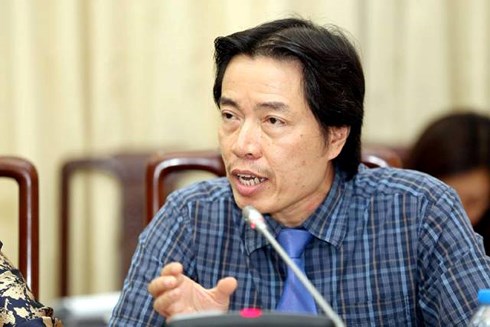 Opinion
Opinion


|
| Đặng Hoa Nam. — Photo infonet.vn |
An official national survey conducted in 2012 revealed Việt Nam had 1.75 million children working between the ages of 5-17. What are your thoughts on this?
The figure truthfully reflects the Vietnamese societal picture at that time. During those years, living conditions of many families, particularly farming households, were poor and their children had to work to help their parents. In those years, up to 67 per cent of children living in the countryside had to do some work in the fields, while some 16.6 per cent of children worked in the service sector and some 15.8 per cent worked in industry or construction.
However, in recent years, Vietnamese children have enjoyed better care than their peers, particularly those living in the countryside or mountainous regions thanks to the improvement of the country’s socio-economic conditions. As a result, the number of children working has dropped considerably. This has been confirmed in the initial result of the national child labour survey conducted earlier this year. However, the official results of the survey will be released later this year.
It is indisputable that child labour, in whatever period of time or in any occupation, brings about certain benefits, including money and food. Yet, in the long run, their physical, mental or psychological development will be negatively affected.
What is the border line between forced labour and learning how to do a certain job for children at a young age?
Under the 2012 Vietnamese Labour Code, an employer is not allowed to recruit a worker under the age of 18 to perform a heavy or hazardous job. Under the 2012 Labour Code, children aged between 13 and 15 with natural talents in sports, arts and other fields could work part time to help develop those talents.
However, we should encourage children to perform chores at home to help their parents in accordance with their ability and interest.
Việt Nam now is a member of the World Trade Organization and a signatory to many free trade agreements, so if Việt Nam allows children to work in the production chain of certain products for export, it is no doubt those products will be rejected and Việt Nam’s prestige in the international arena will be seriously affected.
What should concerned parties do to avoid child labour?
We need to get the involvement of all concerned parties, including the Women’s Union, the Việt Nam Youth Union and others. In addition, employers, both in the formal or informal sectors, should say no to child labour and be a part in the campaign to give the best care to the children. Parents should spend more of their time with their children and be their close friends.
The Children’s Department, under the Ministry of Labour, Invalids and Social Affairs, launched a five year program (2016-2020) to combat illegal child labour in some provinces and cities nation-wide. We also work closely with the International Labour Organization (ILO) in Việt Nam to implement a pilot project focusing “on preventing and minimising child labour while detecting and assisting child workers and vulnerable children in approaching opportunities for development” in Hà Nội and Hồ Chí Minh City._VNS




